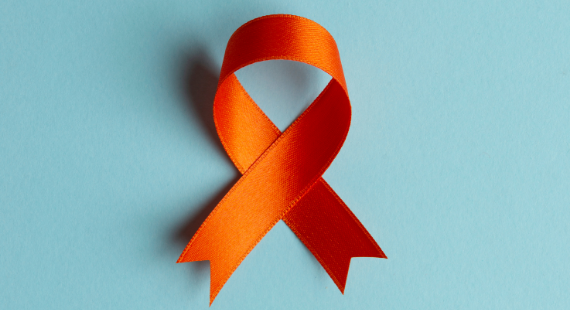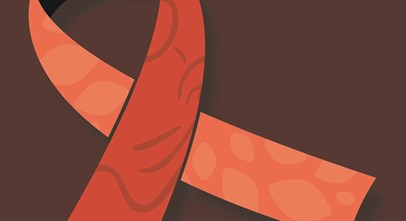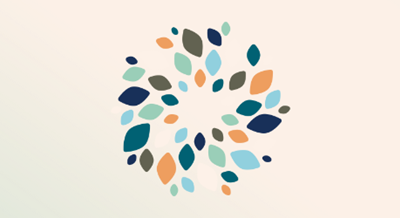
It's very important to reduce stigma and improve understanding around self-harm.
In March 2018, St Patrick’s Mental Health Services (SPMHS) and Pieta came together for the third international Self-Harm Awareness Conference. A diverse group of attendees, including psychologists, advocates and teachers, among others, gathered at the Aviva Stadium in Dublin for a programme of presentations, discussions and workshops aimed at enabling them to explore and better understand self-harm.
Delegates were first welcomed by Paul Gilligan, our Chief Executive Officer (CEO) here at SPMHS, and then by Brian Higgins, CEO of Pieta. In light of recent figures showing an increase in the presentation of self-harm cases, with the National Suicide Research Foundation (NSRF) revealing that the rate of self-harm in 2016 was 10% higher than it was in 2007, both men reiterated the importance of reducing stigma around self-harm and improving understanding of the condition.
Expressing negative energy
Keynote speaker Eoghan Mc Dermott then took to the stage to share his experience of self-harm with the audience. The RTÉ 2fm DJ painted a picture of a happy childhood and young adulthood where his talent for dance was nurtured, leading him to train with prestigious choreographers and dance on tour with internationally renowned popstars. It was through this work that he was spotted and almost accidentally became a television presenter for TG4. The success of that led to a prominent slot on radio station Spin 103.8, where he impressed a radio producer from London and, within a matter of months, found himself presenting drivetime radio on XFM.
Eoghan’s star was in the ascendancy and all seemed well. Things changed a bit when the relationship he was in at the time ended. The ratings for the new radio show were tumbling, and the man who had brought him there as a mentor and friend was behaving increasingly like a boss. These were all difficult developments to cope with at the best of times, but, especially when far away from friends and family, in a new city, in a new life.
The pressure started to build and Eoghan started to feel very isolated. Negative energy was building steadily and he felt it needed a release. Despite never having researched or heard much about self-harm, one evening, Eoghan impulsively self-harmed. This continued for around six months, before he confided in a friend who helped him to access the help he needed and, thankfully, he has enjoyed a positive outcome. He hasn’t self-harmed since and feels equipped to deal with future emotional turbulence in a less destructive way.
Having gone through this experience, and now viewing it with six years’ worth of hindsight, Eoghan had some powerful insights to share. He is adamant that the single most important message to communicate is the importance of reaching out.
Find a trusted person and tell them, even if it’s just sharing a little at first.
However, he is also passionate about the value of thinking beyond that initial interaction. Relaying a conversation where a work colleague commented that it was “easy” for him to talk about his experiences, given his platform, Eoghan also underlined the importance of what happens after someone reaches out for help. Stigma is insidious and, among young, developing minds, it’s often not even conscious. Eoghan appealed to people attending the conference not to ignore the importance of educating people about how to be more accepting and understanding. This is essential for anyone who is dealing with a mental health difficulty to feel safe and accepted among their peers.
Walking the middle path
Following on from the keynote address, a team from our Psychology Department made a presentation that highlighted the challenges and importance of “walking the middle path” when dealing with self-harm.
Senior Counselling Psychologist Dylan Moore began by focusing on managing acceptance and change when having a conversation with someone who is self-harming. It is important to meet the person where they’re at, with empathy and acceptance, not judgement. However, there is also the hope that the person’s harmful behaviours will change. The tricky reality is that we are trying to nudge them towards change, whilst simultaneously ensuring that they feel accepted in the place we are encouraging them to move away from. Self-harm is a complex condition, and finding that balance can be very challenging.
Defining self-harm as “self-poisoning or self-injury, regardless of the intent associated with the act”, Dylan went on to highlight that self-harming behaviours can fulfil different functions for different people at difference times. Assuming the function can often block us from understanding the individual, something that is essential in achieving that acceptance. Any behaviour that sticks around is generally meeting a need or serving a function, and self-harm is no different. Listening to the person in front of us, trying to put ourselves in their shoes, and being led by their experience are the best ways of understanding the function (or functions) this behaviour is serving for them.
Managing emotions that feel unbearable can be a point of convergence for many people who self-harm. Equally, research points to the fact that people who self-harm are generally more sensitive to emotion, feeling things more intensely than others. Dylan shared a description he hears from service users a lot which is that they’re “missing their emotional skin; it feels like it’s all nerve endings”. This can lead to big, intensely negative emotional experiences at times. When a person feels that they are not equipped to manage these intense emotions, it is understandable that they develop whatever coping mechanism they can to get through. Dylan reiterated for those in the room currently engaged in conversations – however informal – with people who are self-harming that acceptance and understanding are essential to helping them. The person is trying the best they can, working hard to stay afloat, but at the same time they need to do better, try harder and be more motivated to change – this is hugely challenging.
Feeling understood is more likely to lead to openness and ultimately first steps towards change, such as learning new skills to help manage emotion.
Understanding that we can't eliminate suffering, but we can learn to regulate emotion
Building on this idea of balancing acceptance with change, Head of our Psychology Department, Richard Booth, treated delegates to a clip from the Disney movie Dumbo. In the piece, the young elephant’s mother reacts emotionally to her son being bullied. She kicks the bully, attacks her boss, and tears down the circus tent, ending up in chains and separated from her young son. Much as the room was sympathetic to her plight, Richard encouraged delegates to look at the piece from a different perspective, focusing on how being led by her emotions around perceived injustices caused her to act against her self-interest. Linking this to self-harm, he questioned whether Mrs Dumbo would be best served by us all merely understanding why she had behaved as she did, rather than helping her to act in a way that would help her to manage her response.
The best way to help people reduce self-harm is to help them regulate their emotion, rather than getting too caught up in a myriad of issues and injustices. Of course, some discussion around issues is important in understanding and arriving at acceptance, but focusing on these alone will not help to change self-harming behaviours. In fact, sometimes they can cause us to fight reality thereby distracting us from the more important work at hand.
“We cannot eradicate suffering and, although we can take steps to try and minimise it, we get better results if we can help people to be more resilient and more skilful in the face of suffering, rather than getting caught up in eliminating suffering from their lives.”
Dealing with self-harm isn’t just for experts
Acknowledging the importance of equipping people with the tools necessary to regulate their emotion, Senior Counselling Psychologist in SPMHS, Tara Deehan, focused on some of the tools necessary for those responding to someone who is self-harming.
Many people who self-harm initially disclose their behaviour in an informal setting: to a teacher, a parent, or a friend, for example. The first response they get to this disclosure is significant and can play a role in setting the tone for how they proceed from there.
While there is no simple checklist to follow, Tara shared some simple points to bear in mind in a scenario that can prove upsetting for both individuals involved. Some of these pointers are more on the acceptance side of things, while others are moving towards the change side.
Regulate your own emotion
When feeling pressure to get our response right and be helpful to a person in distress, our own emotions can get out of hand. Pause, take a breath, observe your feelings and validate them. It’s ok to feel as you do: this is someone you care about and they’re in pain. A quick tip is to try some paced breathing, which involves exhaling for longer than you inhale (breathe in for four and out for six). This is proven to bring down emotional distress.
Validate the person
This is an important way of reducing the emotion of the situation and helping the person to feel heard. Actively listen to them, staying focused and present. Try to be mindful of your own non-verbal cues. Try not to approve or agree, but rather reflect back the person’s feelings without judgement.
Listen
If the person is willing and calm enough to tell you what is going on, ask them what happened and what’s going on for them. Be mindful of not asking lots of questions, as this might be overwhelming. If the person becomes distressed, return to validation.
Brainstorm
If the person is ready, try to collaborate with them on identifying some next steps, such as what they might need, what might help. It’s important to remember here that there may be some steps that need to be taken, such as notifying parents or services, and so on.
Support
Explore how you can provide support for the next steps, what role the person might like you to play, and who else might they like to involve. It’s also a good idea to familiarise yourself with resources that exist in your community.
In conclusion, Tara was keen for delegates to be mindful of self-care in this process, while also being present for the person through working to understand them and ourselves. She also highlighted the importance of being aware of our own limitations and seeking help and additional support where necessary.
Exposing the "secret" of self-harm
A programme of afternoon workshops at the conference continued the conversation and gave delegates the opportunity to work in smaller groups, ask questions, and talk in more detail with some of those working in frontline services and advocacy.
The programme of workshops featured discussions on young people dealing with self-harm, the importance of self-care for those working in support, and first person accounts of what it’s like living with self-harm
- ‘Young people and self-harm’: Marguerite Kiely, Pieta's Clinical Director of Child and Adolescent Services
- ‘Better support through better self-care’: Pauline Bergin, Senior Therapist in Pieta
- ‘Exposing the secret, moving from guilt to acceptance’: Jenny Groves, Founder and CEO of United Kingdom-based support group, Battle Scars.
These sessions dealt with a few different myths around self-harm, such as those below.
Myth: Self-harm is attention-seeking.
Fact: Most self-harm takes place in private.
--
Myth: Self-harm is a suicide attempt
Fact: Actually, most people who engage in self-harm do so as a way of staying alive, or coping; it’s not about ending (suicide).
--
Myth: People who self-harm enjoy pain.
Fact: People who engage in self-harm do so to shift the focus from the emotional distress, and are often trying to communicate that distress.
Replacing stigma with acceptance
Throughout the day, the words "stigma" and "acceptance" came up again and again - the deep damage caused by one and the essential healing enabled by the other. Delegates were reminded of their role in eliminating stigma and thanked for their commitment to fostering a culture of acceptance, the following excerpt from Brian Higgins’ address sums up the responsibility – and power – each of us possesses in this regard.
“We allow stigmas to exist in our own communities and in our own societies, in our workplaces. Our deliberate action or our deliberate inaction grants them the permission to exist and to grow and sometimes we even promulgate them – the throwaway race joke, the gay joke, the casual body-shaming, our rhetoric on who is and who is not one of us. It’s a sad fact that, wittingly or unwittingly, we contribute to stigma, but the redemptive part is that we can all contribute to the solutions. Everyone here is in some way contributing to the solutions for self-harm in our society and the eradication of stigma in our society."
"So if we can care more about self-worth than net-worth, if we can care more about focusing on solutions rather than problems, if we can celebrate difference rather than condemning it, we will really make a positive difference in society, we will really create a world where suicide and self-harm no longer exist and where acceptance has replaced stigma.”
Tags: self-harm conference awareness
If you or someone you know is self-harming, or if you need urgent help, you can find more information and contacts below.
Information and support
Continue to…
Moving from mindless to mindful drinking.


